SDO Transit, September 2015
On Sept. 13, 2015, as NASA's Solar Dynamics Observatory, or SDO, kept up its constant watch on the sun, its view was photobombed not once, but twice. Just as the moon came into SDO's field of view on a path to cross the sun, Earth entered the picture, blocking SDO's view completely. When SDO's orbit finally emerged from behind Earth, the moon was just completing its journey across the sun's face.
Though SDO sees dozens of Earth eclipses and several lunar transits each year, this is the first time ever that the two have coincided.
SDO's orbit usually gives us unobstructed views of the sun, but Earth's revolution around the sun means that SDO's orbit passes behind Earth twice each year, for two to three weeks at a time. During these phases, Earth blocks SDO's view of the sun for anywhere from a few minutes to over an hour once each day.
Earth's outline looks fuzzy, while the moon's is crystal-clear. This is because-while the planet itself completely blocks the sun's light-Earth's atmosphere is an incomplete barrier, blocking different amounts of light at different altitudes. However, the moon has no atmosphere, so during the transit we can see the crisp edges of the moon's horizon.
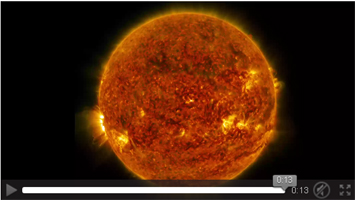 |
| Click on the image for the movie |
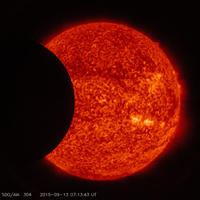 |
| Click on the image for larger view Download Full Resolution |
taken by SDO in 304 Angstroms. |
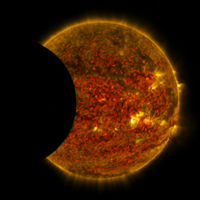 |
| Click on the image for larger view Download Full Resolution |
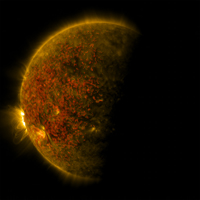 |
| Click on the image for larger view Download Full Resolution |
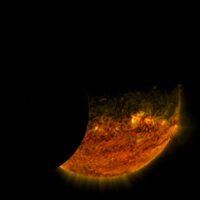 |
| Click on the image for larger view Download Full Resolution |
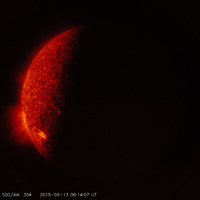 |
| Click on the image for larger view Download Full Resolution |
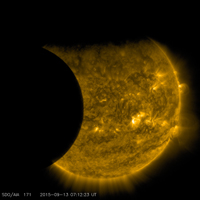 |
| Click on the image for larger view |
Download Full Resolution
SDO is managed by NASA's Goddard Space Flight Center, Greenbelt, Maryland, for NASA's Science Mission Directorate, Washington. Its Atmosphere Imaging Assembly was built by the Lockheed Martin Solar Astrophysics Laboratory (LMSAL), Palo Alto, California.
